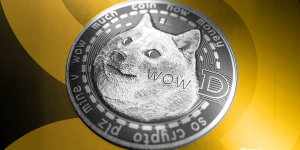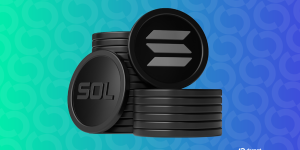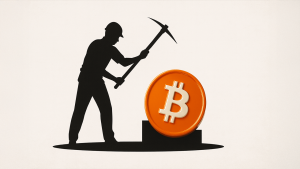If ERC-20 was the Ethereum token standard that launched a thousand ICOs, ERC-721 launched a thousand non-fungible tokens (NFTs). Originally the lesser-known cousin of the ERC-20, ERC-721 has grown to become a pillar of the Ethereum ecosystem, underpinning billions of dollars worth of NFTs.
Blockchains are revolutionary because, for the first time, any type of value could be controlled by a computer program. Before the ERC-721 token standard, most tokens on blockchains functioned either as a currency, a store of value like gold, or a kind of stock or equity.
With ERC-721, it became easy to create tokens that were verifiably, cryptographically unique—and that could be linked to unique content, from artwork to music to sneakers.
What is ERC-721?
ERC-721 is firstly, a type of standard; a template or format that other developers agree to follow. Developers follow the same standards because it makes writing code easier, more predictable, and reusable. These standards are completely voluntary, but following a widely used standard means compatibility with a wide variety of applications including exchanges, dapps, and wallets.
ERC-721 is a token standard on Ethereum for non-fungible tokens (NFTs). Fungible means interchangeable and replaceable; Bitcoin is fungible because any Bitcoin can replace any other Bitcoin. Each NFT, on the other hand, is completely unique. One NFT cannot replace another.
Who Invented ERC-721?
The initial ERC-721 specification was proposed by Dieter Shirley as an Ethereum Improvement Proposal (EIP), which is a process for introducing new standards to Ethereum.
Anyone can submit an EIP, but it goes through a process of review and iterations before it is accepted by the community. Once accepted, the EIP becomes an Ethereum Request for Comments (ERC), which is a standard for Ethereum applications. The official authors of the ERC-721 standard are William Entriken, Dieter Shirley, Jacob Evans, and Nastassia Sachs.
CryptoKitty follows the ERC721 standard and the cat collecting game used the beta version of ERC721 before the standard was finalized. The most expensive CryptoKitty was purchased in September 2018 for 600 ETH or about $170,000 at the time.
A brief history
September 2017 – Dieter Shirley introduces EIP-721.
December 2017 – NFT project CryptoKitties is so popular that it congests the Ethereum network and caused it to slow down significantly.
June 2018 – ERC-721 is accepted as ‘final’, which means there is a strong consensus among Ethereum developers to accept it as a standard.
What’s so special about ERC-721?
The main characteristic of ERC-721 tokens is that each one is unique. When an ERC-721 token is created, there is one and only one of those tokens in existence. These NFTs have spread the idea and application of unique assets on Ethereum.
Did you know?
ERC-721 tokens were also known as deeds, because being in possession of an ERC-721 means that the holder owns the rights to that token and what it represents. However, the authors of ERC-721 decided to use the term “non-fungible token” for an ERC-721 token because the deed was thought to be too closely associated with property and NFTs have many more potential applications.
How are ERC-721 NFTs produced?
A token is simply a smart contract or a piece of code on Ethereum. An ERC-721 token is created by writing a piece of code in a smart contract programming language like Solidity that follows the same basic template or base code.
Once the basic template is followed, you can decide on unique details about the token you are creating such as the owner, name of the token, symbols, etc. You can even program extra functionality in your NFT, but the real fun is how the NFT interacts with other smart contracts.
How do you get hold of ERC-721 NFTs?
There are a vast array of ERC-721 NFTs available on Ethereum; Etherscan lists over 72,000 token contracts at time of publishing. They include everything from blue-chip NFT collections such as Bored Ape Yacht Club to obscure individual NFTs created by curious crypto users.
Ethereum NFTs can be traded on marketplaces including OpenSea, Rarible and SuperRare. To store your NFT you’ll need an Ethereum wallet; either a software wallet such as MetaMask, or a hardware wallet.
What can you do with ERC-721 NFTs?
Initially, ERC-721 tokens were mainly used as digital collectibles; more recently they’ve begun to appear in decentralized applications (dapps) such as games, to represent virtual items. They include titles such as Decentraland and Gods Unchained. As the metaverse—a persistent virtual world in which people interact as avatars—gains traction, it’s widely expected to make extensive use of NFTs.
The Future
Ethereum isn’t the only blockchain to support NFTs; other smart contract blockchains such as BNB Chain and Avalanche have emerged in recent years, each playing host to their own NFTs. With that has come new token standards, many of them based on ERC-721 (such as BNB Chain’s BEP-721 and Secret Network‘s SNIP-721).
Other NFT token standards have emerged on Ethereum, too, with varying degrees of success, such as ERC-875, ERC-1155 and ERC-998; all of which offer their own unique set of features. Still, ERC-721 is still chugging along, helping to tokenize anything that’s unique. That can mean anything from a person’s birth certificate to property, art, or even rare items in video games. The most exciting prospect will be seeing how ERC-721 tokens can be used in smart contracts to create completely new business models and ways to transact.
The best of Decrypt straight to your inbox.
Get the top stories curated daily, weekly roundups & deep dives straight to your inbox.













